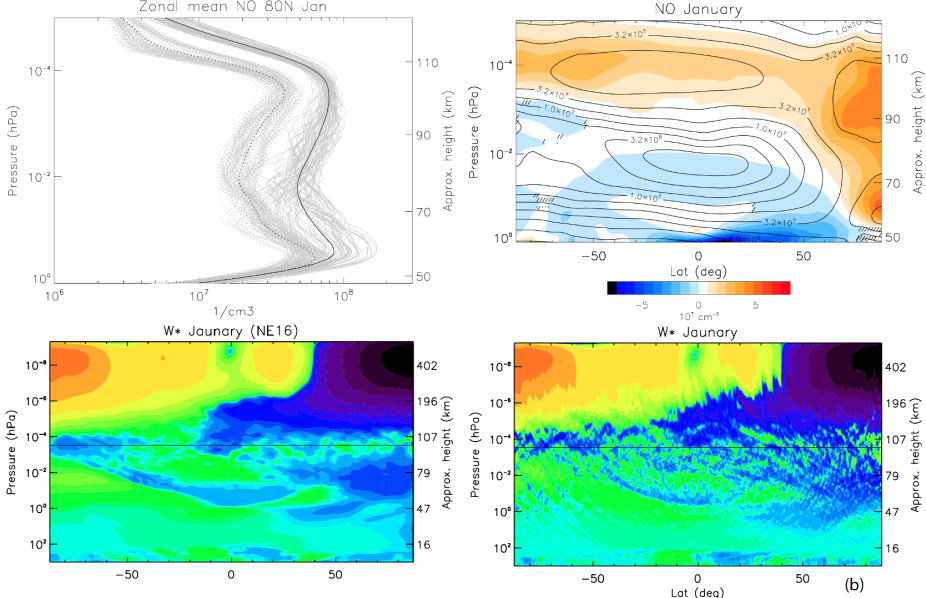Geospace Updates
Development of a more accurate ionospheric electric dynamo solver
A new, field line based ionospheric electric dynamo model has been developed for WACCM-X. Compared to the one used in the current WACCM-X, the new dynamo has the following features: (1) It is a more accurate representation of the ionospheric electric potential, since it is solved the electrodynamics directly on the field line grid, rather than on the longitude/latitude/pressure grid using crude approximations. (2) The high-latitude magnetospheric input can be specified through electric currents. The enables a more physically consistent coupling between the ionosphere and magnetosphere. It can also accommodate hemisphere asymmetric specification of the high-latitude forcing. (3) Numerically, the application of SuperLU solver for the electric potential equation is more flexible than the multigrid solver used in the current dynamo. The ongoing implementation of the MPI SuperLU solver will also enable high-resolution dynamo simulation, and therefore the study of fine structures of ionospheric current and electrojet.
New Study: Transport of nitric oxide in the winter mesosphere and lower thermosphere
The Earth's thermosphere is heated by the solar extreme ultraviolet (EUV) irradiance and by energetic particle precipitation during solar and geomagnetic storms, and nitric oxide (NO) is one of the most important cooling agent in the thermosphere. The NO level increases rapidly during storm time, making it a natural thermostat for the thermosphere. Moreover, NO is long-lived in polar night region, where it can descend along with the general circulation into the middle atmosphere and effectively destroy ozone. It is therefore an important species for the energy balance of the upper atmosphere and the chemistry and dynamics of the middle atmosphere. However, until recently NO in the winter middle and upper atmosphere is often underestimated in global models that simulate the whole atmosphere system. Newly high-resolution WACCM-X, developed under the SIMA project, start to show considerable improvement. Our analysis presented in this study reveals rigorous downward transport in the winter mesosphere and lower thermosphere from the high-resolution model that is not seen in coarse-resolution simulations. The strong downward transport is mainly driven by gravity waves resolved by the high-resolution model.

Caption: Nitric oxide (NO) level in the mesosphere and lower thermosphere during polar night is much higher, and compares better with observations in high-resolution WACCM-X simulation. This is seen in the vertical profiles of zonal mean NO at 80N from high-resolution WACCM-X simulation. This is seen in the vertical profiles of zonal mean NO at 80N from high-resolution (solid lines) and coarse-resolution (dotted lines) simulations (upper left). Black lines are January averages, and gray lines are daily values. The upper right panel shows the number density of NO from the high-resolution simulations (line contours) and difference between high-resolution and coarse-resolution simulations (contour shades) for January. Non-stippled regions indicate differences that are significant over 95% confidence level according to Student's T-test. This difference stems from the vertical transport due to residual mean circulation and eddy transport. The residual mean vertical wind for January from the coarse resolution (lower left) and high-resolution (lower right) have very different features: at ~100 km (thin horizontal line) the former shows a rather uniform structure with weak flow, while the latter shows large mesoscale flow channels with large vertical velocity.
Liu, H.-L. (2025). Transport of nitric oxide in the winter mesosphere and lower thermosphere. Geophysical Research Letters, 52, e2024GL113027. Doi: 10.1029/2024GL113027







